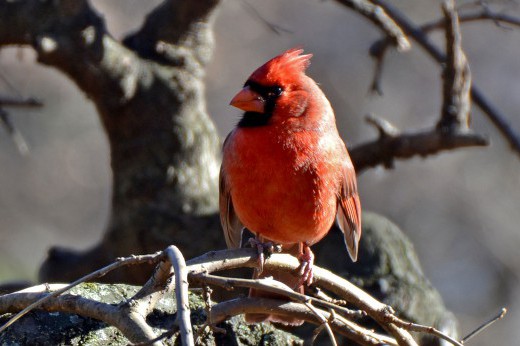Now is the time to start looking for the red-winged blackbird, one of the earliest migratory birds to arrive in the New York City area. The males are the first to arrive—they come in flocks ahead of the females, usually in late February and early March, to establish their territories. The males are very aggressive and chase other birds out of their territory.
Expect flocks of females in another two or three weeks. Males usually have at least two—and sometimes up to five—mates. This keeps them very busy defending multiple nests from predators. Marsh wrens eat red-winged blackbird eggs, and crows steal their young from the nest. If you’ve ever seen a small blackbird chasing and attacking a crow, it is probably a red-wing.
One of the most common birds in North America, the red-winged blackbird breeds in Prospect Park, Marine Park, Floyd Bennett Field, and other Brooklyn locations with marshy areas. They like cattails, so look for them at Brooklyn Botanic Garden near the Rose Arc Pool. The male is easy to identify—it’s a medium-size bird with dark eyes, and its feathers are black except for the red and yellow patches at its shoulders, called epaulets. These are especially obvious when the male is in flight or singing from an exposed perch. His song sounds like a musical “konk-a-ree.” The female, resembling a large sparrow, heavily streaked, is not as easy to identify. As a matter of fact, she is one of the most misidentified birds in New York.
Each female red-winged blackbird usually produces two broods, each with three or four young. You can see why they are so common! They eat lots of insects in spring and summer, which is beneficial to us humans, but in the fall, they switch to grains, which is not so good for our crops. Come fall, when they migrate south again, they’ll separate into flocks by gender. The females leave first, followed by the males. You might see thousands of red-winged blackbirds flying south at once in early November. They don’t go too far—Florida, the Gulf Coast, or maybe northern Mexico. By next February, they’ll be ready for their return journey back north, signaling that a new season is about to start.
The Birds of Brooklyn series looks at some of the most familiar and fascinating birds that call Kings County their habitat.



